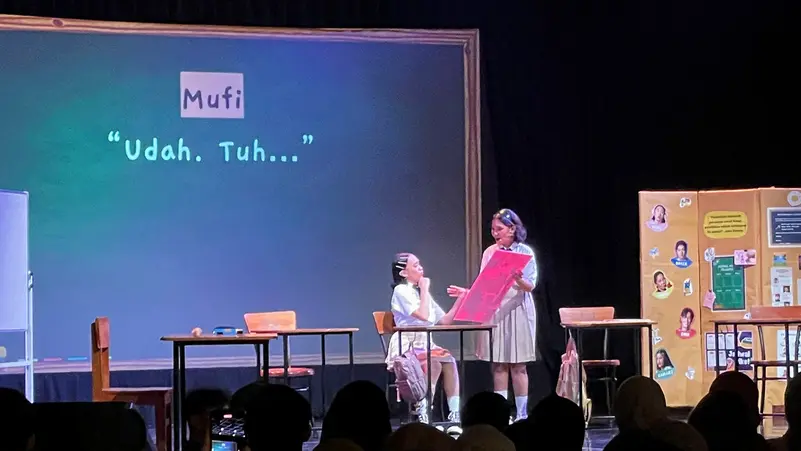In Jakarta, the stage of a local theatre was alive with rhythmic music and dancing, but this performance came with a unique twist: it was Indonesia’s first musical led primarily by deaf artists. Presented by Fantasi Tuli, or Deaf Fantasy, the production, titled Senandung Senyap (Songs of Silence), uses vibrant expressions, hand signs, and screens displaying lyrics and dialogue instead of vocal performances. The show is a groundbreaking project led by directors Hasna Mufidah and Helga Theresia, aiming to promote inclusivity and the use of sign language, particularly in education.
The story follows students at a middle school for children with disabilities, shedding light on the experiences and struggles of deaf students in Indonesia’s education system. Deaf students in Indonesia are often encouraged to rely on speech training and lip-reading rather than on sign language, reflecting a broader debate within the community about educational approaches. Some in the deaf community feel that focusing solely on oral methods can foster alienation, advocating for sign language as a more natural and inclusive means of communication. Others believe oral skills could facilitate integration with the hearing community.
Hasna Mufidah, who is deaf, expressed hope that this performance would foster greater equality and understanding between hearing and deaf individuals. “Hearing is not superior—we’re equal,” she stated through Indonesian sign language. Inspired by Deaf West Theatre in the U.S., Senandung Senyap involved over 60 deaf actors and crew, aged between 16 and 40, who spent three months preparing for the show.
For deaf actor Hanna Aretha Oktavia, the production introduced her to sign language and the wider deaf community. The rehearsals were a journey in expression, as performers needed to rely heavily on facial cues and physical gestures to follow the storyline. “During rehearsals, we had to use as much expression as possible,” said Hanna. “What’s intriguing is feeling the tempo and vibrations, matching them with the choreography. I love dancing, and here, we pay attention to beats using hearing aids and large speakers to guide us.”
In Indonesia, more than 2 million people live with hearing disabilities, including nearly 28,000 students in special-needs schools. By bringing Senandung Senyap to the stage, Fantasi Tuli has created a powerful platform for both the deaf and hearing communities to appreciate the beauty of sign language and the importance of inclusivity.
READ MORE:
